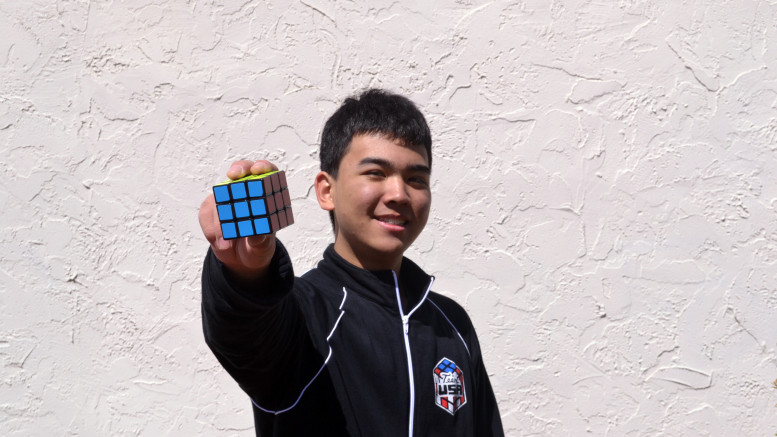By: Staff Writer Peter Qiu
Junior Kevin Zeng is a “speedcuber” who is able to solve many variations of the Rubik’s Cube in a short time. His achievements include placing in the top ten at Stanford and Berkeley tournaments, as well as placing in the top hundred at the World Championships. Zeng has competed in events for all cubes 2×2 to 7×7, including the Pyraminx. The Smoke Signal interviewed him to talk about his cubing accomplishments and future goals.
SS: How long have you been cubing? What got you interested?
KZ: I first solved the Rubik’s cube around 6th grade after having a friend teach me, but it didn’t become a hobby for me until around April 2011. At that time, cubing became a fad among my friends, and pretty soon all of Hopkins as well. We were all trying to get faster and faster, and the everlasting challenge of being the fastest was the motivation that claimed my interest in cubing for a while. Now, because I’m not improving much, I practice occasionally to maintain myself and for leisure.
SS: What are some experiences you’ve gained from cubing?
KZ: Last summer, I went to Las Vegas for the World Championships. I met most of the world record holders, such as Feliks Zemdegs, and even raced a few of them. I lost of course. I also met people from all over the world, and it was really interesting to know more about their cultures and backgrounds. Besides that, I was able to meet many students from Stanford, Berkeley, and various high schools from the competitions that I’ve gone to and organized in the past.
SS: What is your fastest time and future goals?
KZ: As of now, I really only practice 3×3 and 4×4 cubes. My fastest on the 3×3 is 5.84 seconds, and my fastest on the 4×4 is 33.29 seconds. In terms of goals, I don’t have any for single solves since those are mostly luck, but I’m aiming for a sub-9.5 and sub-40 average of 100 solves for 3×3 and 4×4, which means an average below 9.5 and 40 seconds, respectively.
SS: Do you have any tips for people just getting started?
KZ: Cubing, like many things, isn’t as hard as it might seem. At the core of it, speedcubing is pretty much memorization, a bit of dexterity, pattern recognition, quickness of reaction, and looking ahead and predicting. You only need to do the first two, since you already do the other three on a daily basis. To solve the cube, you really only need to know 2-3 algorithms, each of which isn’t longer than a telephone number. And to be faster, it all comes down to practice.
As for tips for beginners, an important thing is to know that you don’t solve cubes by manipulating 54 stickers, but 20 pieces. Each piece indicates a set of colors that can’t be changed; for example, the red/white/blue corner can’t turn into a red/white/yellow corner. Another is to get a good cube; Dayan brand is popular. Lubricate it with silicone oil/spray so you won’t strain your fingers when you try to turn faster.



Be the first to comment on "Student Spotlight: Kevin Zeng, Speedcuber"